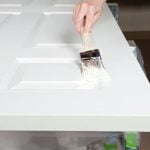Home improvement plays a crucial role in creating a space that reflects your style, meets your needs, and enhances the overall appeal of your home. From small changes like a fresh coat of paint to major renovations like a kitchen remodel, there are endless possibilities to personalize and upgrade your living space. In this article, we will explore how to do home improvement, outlining essential steps to help you achieve your desired results.
Before diving into any home improvement project, it is important to identify key areas that need attention and set specific goals for each space. Whether it’s enhancing functionality, increasing energy efficiency, or simply updating outdated elements, having a clear vision will guide your decisions throughout the process. Additionally, establishing a realistic budget is essential in ensuring that your projects are feasible and within reach.
Researching different home improvement ideas and seeking inspiration can spark creativity and help you envision the possibilities for your space. Whether you prefer DIY projects or are considering hiring professionals, weighing the pros and cons of each option will impact the outcome of your endeavors. By equipping yourself with the right tools and materials, following safety precautions, and maintaining your improvements regularly, you can create a home that you can enjoy for years to come.
Setting Goals
When embarking on a home improvement project, it is crucial to start by setting clear and realistic goals. Whether you are looking to enhance the functionality, aesthetics, or value of your home, identifying the areas that need improvement is the first step towards achieving your desired outcome.
Take a walk around your house and make a note of any areas that require attention, such as outdated fixtures, peeling paint, or lack of storage space. By pinpointing specific areas for improvement, you can create a focused plan of action to achieve your goals effectively.
Assessing Priorities
Once you have identified the areas in need of improvement, it is essential to assess their importance and prioritize them based on your budget and timeline. Consider factors such as safety hazards, daily use, and visual impact when determining which projects should take precedence.
For example, addressing a leaky roof or faulty electrical wiring should be prioritized over cosmetic upgrades like painting walls or replacing decorative items. By categorizing your home improvement projects according to urgency and significance, you can allocate resources efficiently and avoid overwhelm.
Setting SMART Goals
To ensure that your home improvement projects are successful and manageable, it is beneficial to set SMART goals: Specific, Measurable, Achievable, Relevant, and Time-bound. Be specific about what you want to accomplish in each area of improvement – whether it’s installing new lighting fixtures in the living room or renovating the kitchen cabinets. Determine measurable outcomes to track progress and evaluate success along the way.
Make sure that your goals are achievable within your budget constraints and relevant to enhancing the overall function or appearance of your home. Finally, establish a realistic timeline for completing each project to stay on track and motivated throughout the process.
By setting clear goals for your home improvement projects and strategically prioritizing them based on importance and feasibility, you can effectively transform your living space while staying within budget and timeline constraints. Whether you choose to tackle small DIY projects or hire professionals for major renovations, having a well-defined plan in place will help you achieve the desired results with confidence and efficiency.
Remember that home improvement is not just about enhancing the aesthetics of your space but also about creating a comfortable and functional environment that aligns with your lifestyle needs.
Budgeting
Once you have established your budget, the next step is to prioritize which areas of your home need improvement the most. By identifying key areas that require attention, you can allocate your budget more effectively and focus on making impactful changes that will enhance both the functionality and aesthetic appeal of your living space.
Whether it’s upgrading your kitchen, renovating your bathroom, or enhancing your outdoor space, having a clear vision of your priorities will help streamline the budgeting process and keep you on track with your financial goals.
In addition to setting a budget and prioritizing your projects, it’s also important to research the cost of materials and labor associated with each home improvement task. By obtaining quotes from contractors or visiting local hardware stores to compare prices, you can get a better understanding of how much each project will cost and adjust your budget accordingly.
Remember that quality materials often come with a higher price tag but can lead to longer-lasting results, so it’s essential to strike a balance between affordability and durability when planning your home improvement projects.
| Key Tips | Benefits |
|---|---|
| Determine a clear budget limit | Prevents overspending |
| Prioritize areas that need improvement | Focuses spending on impactful changes |
| Research material and labor costs | Helps in adjusting the budget accordingly |
Research
When it comes to home improvement, taking the time to research different ideas and gather inspiration is crucial. Whether you are looking to tackle a small project like updating your bathroom or a larger project such as remodeling your kitchen, exploring various options can help you make informed decisions. Here are some ways to research different home improvement ideas:
- Browse Home Improvement Magazines and Websites: One of the best ways to get inspiration for your home improvement projects is by flipping through home improvement magazines or browsing websites dedicated to showcasing before and after transformations. These resources often feature photos, articles, and tips on the latest trends in home improvement.
- Visit Home Improvement Stores: Another great way to explore different ideas for your home is by visiting local home improvement stores. Walking through aisles filled with various tools, materials, and accessories can spark creativity and help you visualize how certain elements can enhance your living space.
- Attend Home Improvement Workshops or Seminars: Many hardware stores or community centers offer workshops or seminars on topics ranging from basic carpentry skills to advanced painting techniques. Attending these events can provide valuable insight into the world of home improvement and give you the confidence to tackle projects on your own.
By dedicating time to research different home improvement ideas and gather inspiration, you can create a clear vision of how you want your space to look and function. This will not only help you set realistic goals for your projects but also ensure that the end result aligns with your personal style and preferences.
Remember that every home is unique, so take the time to explore various options before diving into a project. With careful research and planning, you can turn your house into a place that reflects your personality and meets your needs perfectly.
DIY vs Hiring Professionals
When it comes to home improvement projects, one of the important decisions you will have to make is whether to tackle the tasks yourself or hire professionals to do the job. Both options have their own pros and cons, so it’s essential to weigh them carefully before making a decision. Here are some factors to consider when deciding between DIY and hiring professionals for your home improvement projects:
- Skill Level: Consider your own skill level and experience in handling the specific task at hand. Some projects may require specialized knowledge and expertise that only professionals possess.
- Time Constraints: Think about how much time you can dedicate to the project. DIY projects often take longer to complete, while professionals can get the job done quickly and efficiently.
- Cost: Compare the cost of doing it yourself versus hiring professionals. While DIY projects may seem more cost-effective upfront, mistakes could end up costing you more in the long run if not done correctly.
Ultimately, the decision between DIY and hiring professionals depends on your confidence in your abilities, budget constraints, and personal preferences. If you’re unsure of how to do home improvement tasks properly or lack the necessary skills and tools, it may be worth investing in professional help. On the other hand, if you enjoy taking on challenges and have a knack for DIY projects, doing it yourself can be a rewarding experience that saves you money in the process.
Tools and Materials
When embarking on a home improvement project, having the right tools and materials is essential to ensure that the job gets done correctly and efficiently. Whether you are looking to repaint a room, install new flooring, or tackle a major renovation, having a well-stocked toolbox and access to quality materials can make all the difference in the outcome of your project.
Some essential tools that every homeowner should have in their arsenal include a good quality hammer, screwdrivers in various sizes, a tape measure, a level, pliers, a utility knife, and a power drill. These tools will come in handy for a wide range of projects around the house and will prove to be invaluable investments in the long run.
In addition to basic hand tools, it’s also important to have specific tools for specialized tasks such as painting or woodworking.
In terms of materials, it’s important to use high-quality products that will stand the test of time. Whether you’re working on an interior or exterior project, choosing durable materials can help prevent costly repairs down the line. From paint and flooring materials to plumbing fixtures and electrical components, investing in quality materials can significantly enhance the longevity and overall look of your home improvement projects.
| Tools | Materials |
|---|---|
| Hammer | Paint |
| Screwdrivers | Flooring Materials |
| Tape measure | Plumbing Fixtures |
Step-by-Step Guide
Planning and Preparation
Before diving into any home improvement project, it is crucial to plan and prepare accordingly. Start by assessing the areas in your home that require improvement and prioritize them based on urgency and budget. Create a detailed timeline for each project, taking into consideration factors such as estimated costs, availability of materials, and necessary permits. By having a clear plan in place, you can effectively manage your time and resources throughout the renovation process.
Gathering Tools and Materials
Once you have established a plan for your home improvement projects, the next step is to gather the essential tools and materials needed to complete each task. Depending on the nature of the project, you may require basic tools such as a hammer, screwdriver, tape measure, and level, as well as specific materials like paint, flooring materials, or fixtures. Ensure that you have everything on hand before starting any work to avoid unnecessary delays or interruptions during the renovation process.
Execution and Completion
With your plan in place and tools at the ready, it’s time to begin executing your home improvement projects. Follow the steps outlined in your plan carefully, making sure to adhere to safety guidelines and manufacturer instructions when using tools or applying materials.
Take your time with each task to ensure quality workmanship and pay attention to detail to achieve the desired results. Once you have completed all necessary steps, step back and admire your hard work – you have successfully transformed your living space through effective home improvement practices.
Safety Precautions
When embarking on home improvement projects, it is crucial to prioritize safety to prevent accidents and injuries. Whether you are painting a room, renovating a kitchen, or landscaping your yard, there are certain safety precautions that should always be followed. One of the most important tips to remember is to wear appropriate protective gear such as goggles, gloves, and closed-toe shoes to protect yourself from potential hazards.
Another important safety measure to take when doing home improvement projects is to ensure proper ventilation in the work area. This is especially crucial when using chemicals, paints, or stains that can emit fumes that may be harmful if inhaled. Opening windows and doors or using fans can help to improve air circulation and minimize the risk of respiratory issues. Additionally, it is important to read and follow all product instructions carefully to avoid accidents or misuse of materials.
Furthermore, when working with power tools or equipment, make sure to use them properly and safely. Always unplug tools when not in use, keep cords out of the way to prevent tripping hazards, and never overload electrical outlets.
It is also essential to have a fire extinguisher nearby in case of emergencies. By following these safety tips and being mindful of potential risks, you can ensure a safe and successful home improvement project that enhances your living space for years to come.
Maintenance and Upkeep
Maintaining and keeping up with your home improvement projects is crucial to ensure that your hard work and investment last for years to come. After completing a renovation or enhancement in your home, it is essential to follow some key tips to maintain its quality and appearance.
One important aspect of maintenance is regular cleaning and upkeep of the improved areas. Whether it’s a newly painted wall, a renovated kitchen, or a landscaped garden, keeping these spaces clean will help preserve their beauty.
Another tip for maintaining your home improvement projects is to address any issues promptly. This includes fixing leaks, repairing damaged surfaces, or replacing worn-out materials. By addressing problems as soon as they arise, you can prevent further damage and costly repairs down the line. Regular inspections of the renovated areas can help you identify any issues early on and take corrective action before they escalate.
In addition to regular cleaning and prompt repairs, proper care and usage of the improved areas are also essential for long-term maintenance. For example, following manufacturer’s instructions for cleaning certain materials or surfaces can help prevent damage. Similarly, using appropriate cleaning products and techniques can prolong the life of your home improvements. By taking these simple maintenance steps regularly, you can ensure that your home looks great and remains in top condition for years to come.
Conclusion
Home improvement is a crucial aspect of homeownership that should not be overlooked. By investing time, effort, and resources into enhancing your living space, you not only increase the value of your property but also create a more comfortable and aesthetically pleasing environment for you and your family to enjoy. From small renovation projects to major upgrades, there are numerous ways in which you can improve the functionality and appeal of your home.
One of the first steps in embarking on a successful home improvement journey is setting clear goals and objectives. By identifying areas of your home that require attention and improvement, you can prioritize tasks and create a roadmap for your projects. Additionally, establishing a realistic budget is essential to ensure that you are able to complete your home improvement projects within financial constraints.
Whether you choose to tackle home improvement projects on your own or enlist the help of professionals, it is important to approach each task with caution and attention to detail. Safety precautions should always be observed to prevent accidents or injuries during the renovation process.
Furthermore, regular maintenance and upkeep are key to preserving the quality and longevity of your home improvements. By following these guidelines on how to do home improvement effectively, you can transform your living space into a sanctuary that reflects your style and personality while adding value to your property.
Frequently Asked Questions
How Do I Get Started in Home Improvement?
Getting started in home improvement involves first identifying what areas of your home you want to improve. This could include updating outdated fixtures, renovating a specific room, or tackling larger projects like adding a new addition. Researching different options and setting a budget are important initial steps in the process.
What Should I Do First for Home Improvement?
The first thing you should do for home improvement is to carefully plan out your project. This includes creating a detailed budget, timeline, and list of priorities for the renovations. Consider hiring professionals for any tasks that are beyond your skill level to ensure that the project is completed successfully and efficiently.
In Which Order Should You Renovate a House?
When renovating a house, it is important to follow a logical order to ensure that the project runs smoothly. Typically, it is best to start with structural repairs first, such as fixing any foundation issues or repairing the roof.
Next, focus on essential systems like plumbing and electrical work before moving on to cosmetic upgrades such as painting or flooring. Following this order can help prevent unexpected issues from arising during the renovation process.

I’m thrilled to have you here as a part of the Remodeling Top community. This is where my journey as an architect and remodeling enthusiast intersects with your passion for transforming houses into dream homes.





